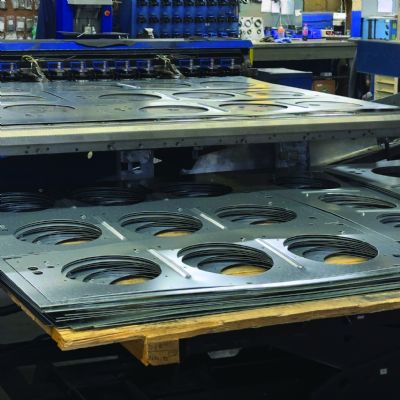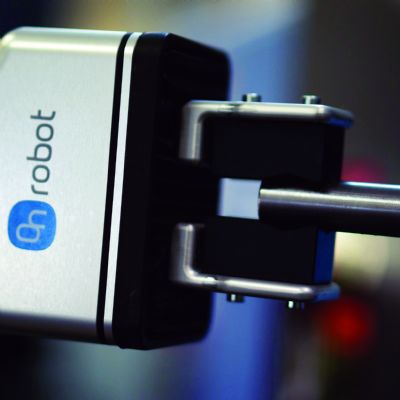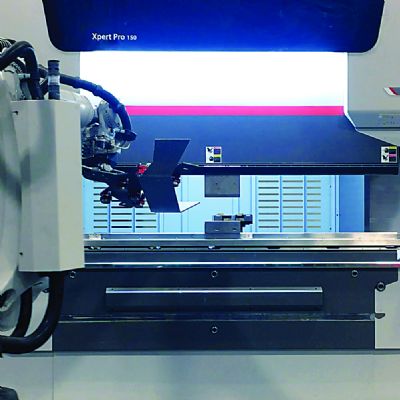 Brad Kuvin
Brad KuvinPress Brake Efficiency
January 19, 2024Comments
Once upon a time in the world of sheet metal fabrication, OEMs with captive, inhouse fabrication departments, promising to deliver shortened lead times to customers, would build up inventory of common product sizes and styles and ship from inventory. Today, ship from inventory no longer works for most OEMs. Forces at work include product customization, small order quantities and short lead times, often requiring that manufacturers seek continuous efficiency improvement from their fabrication processes.
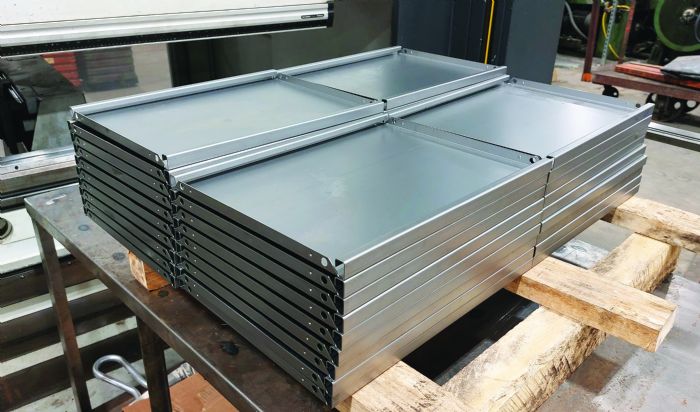 Such is the case at Richards-Wilcox, Inc., a 143-yr.-old privately owned manufacturing company headquartered in Aurora, IL. While the firm still works from its original location, its 365,000-sq.-ft. plant looks nothing like it once did. Likewise, its operating procedures have evolved dramatically over the years, as it grapples with tight delivery deadlines in the face of dwindling order volumes causing frequent changeovers.
Such is the case at Richards-Wilcox, Inc., a 143-yr.-old privately owned manufacturing company headquartered in Aurora, IL. While the firm still works from its original location, its 365,000-sq.-ft. plant looks nothing like it once did. Likewise, its operating procedures have evolved dramatically over the years, as it grapples with tight delivery deadlines in the face of dwindling order volumes causing frequent changeovers.
Serving Three Masters
Richards-Wilcox—which operates three different branded businesses—has transitioned from primarily a supplier of high-volume stock products shipped from inventory into a supplier of large, custom, project-based products. The three business units under one roof: Richards-Wilcox Hardware (the original company brand, founded as a manufacturer of hardware for sliding doors); Richards-Wilcox Overhead Conveyor (which grew out of the hardware company when the firm invented and patented enclosed box-track door hardware and evolved the design for use in conveyors); and Aurora Storage Products (a portfolio of shelving and cabinet products used in variety of applications including museum-grade cabinets, mobile shelving and pallet racking).
“We operate a fully stocked sheet metal fabrication area in the plant common to all three product lines,” explains company president Bob McMurtry. He describes for MetalForming the firm’s network of work centers providing laser cutting, press brake forming, manual and automated/robotic arc and resistance welding, and assembly, as well as the firm’s inhouse electrostatic powder-coat line.
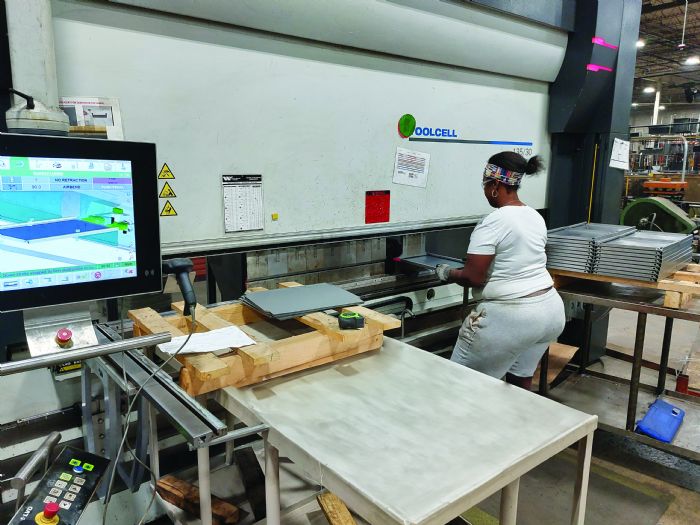 “The fabrication process starts with blanking, either in dedicated stamping dies from coil stock slit to width, or we laser-blank with a 4.5-kW fiber-laser cutting machine,” he says. “We also can blank in our laser-turret punch combination machine, depending on blank complexity.”
“The fabrication process starts with blanking, either in dedicated stamping dies from coil stock slit to width, or we laser-blank with a 4.5-kW fiber-laser cutting machine,” he says. “We also can blank in our laser-turret punch combination machine, depending on blank complexity.”
The fabrication department, representing the heart of the business transformation at Richards-Wilcox, cuts, forms and assembles parts primarily from mild steel as thin as 24 gauge, while also working with structural-steel grades to ½ in. thick. From blanking, parts move to forming—roll forming, panel bending and press brake, the subject of our discussion with McMurtry. He emphasizes the changing dynamics of the press brake department, home to 10 press brake production cells from 50- to 275-ton capacity.






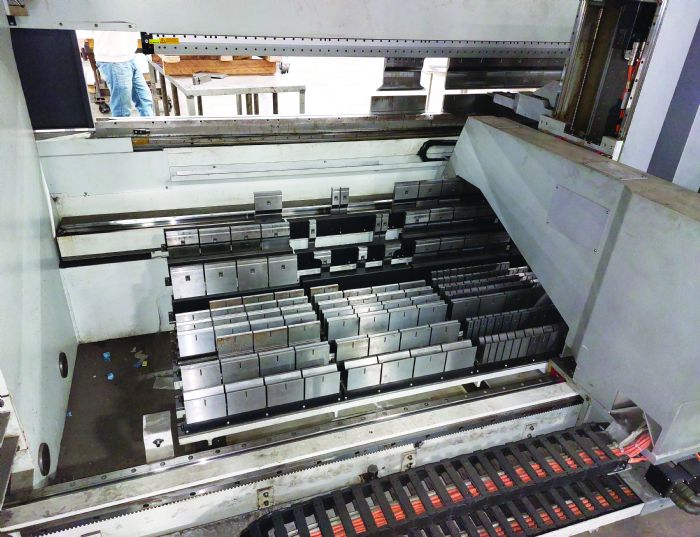 A pivotal player in Richards-Wilcox’s efficiency playbook, and its latest CI project: the addition, in July 2020, of a fully equipped hydraulic press brake (135-ton capacity, 12-ft. bed) with integrated automatic tool changer—a ToolCell from LVD Group. The machine’s six-axis modular backgauge features integrated grippers that load and unload tools from an on-board “tooling stadium” that stores two complete lengths of punches and five complete lengths of dies. Quick-acting hydraulic clamping with hardened inserts also helps to minimize changeover times, all setting the stage for a transformative journey towards a more automated and efficient forming operation.
A pivotal player in Richards-Wilcox’s efficiency playbook, and its latest CI project: the addition, in July 2020, of a fully equipped hydraulic press brake (135-ton capacity, 12-ft. bed) with integrated automatic tool changer—a ToolCell from LVD Group. The machine’s six-axis modular backgauge features integrated grippers that load and unload tools from an on-board “tooling stadium” that stores two complete lengths of punches and five complete lengths of dies. Quick-acting hydraulic clamping with hardened inserts also helps to minimize changeover times, all setting the stage for a transformative journey towards a more automated and efficient forming operation.